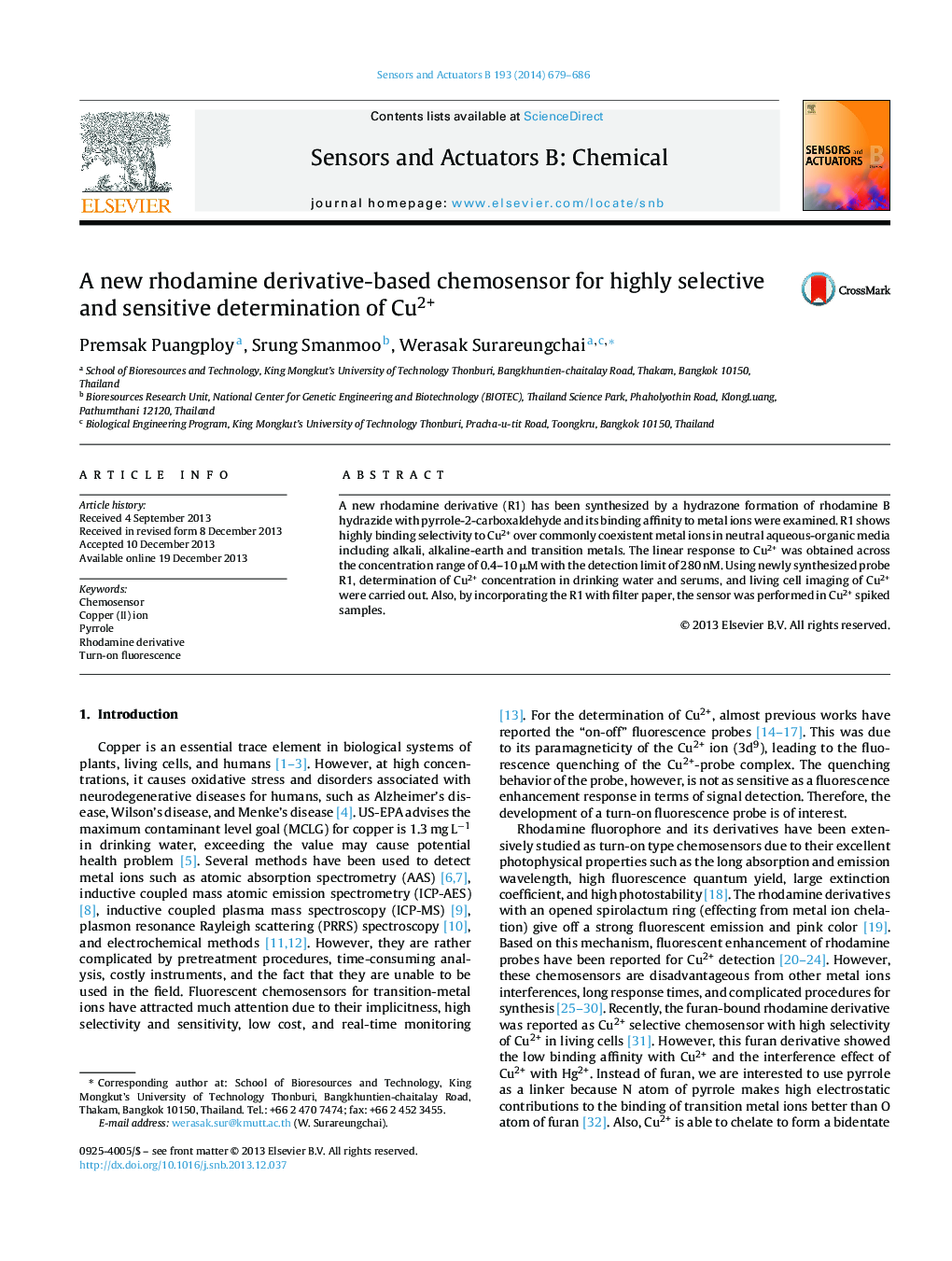| Article ID | Journal | Published Year | Pages | File Type |
|---|---|---|---|---|
| 740124 | Sensors and Actuators B: Chemical | 2014 | 8 Pages |
•Turn-on fluorescence chemosensor of a novel rhodamine derivative bearing a pyrrole unit was high selective to Cu2+ ion more than other metal ions in aqueous/organic media.•Detection limit of the rhodamine chemosensor was lower than the limit value of Cu2+ concentration in drinking water and human serum.•The fluorescent probe was successfully applied to detect Cu2+ in biological and environmental samples and to monitor Cu2+ ion in intracellular living cells.•R1 sensor was demonstrated in a form of paper for applying in natural water.
A new rhodamine derivative (R1) has been synthesized by a hydrazone formation of rhodamine B hydrazide with pyrrole-2-carboxaldehyde and its binding affinity to metal ions were examined. R1 shows highly binding selectivity to Cu2+ over commonly coexistent metal ions in neutral aqueous-organic media including alkali, alkaline-earth and transition metals. The linear response to Cu2+ was obtained across the concentration range of 0.4–10 μM with the detection limit of 280 nM. Using newly synthesized probe R1, determination of Cu2+ concentration in drinking water and serums, and living cell imaging of Cu2+ were carried out. Also, by incorporating the R1 with filter paper, the sensor was performed in Cu2+ spiked samples.
Graphical abstractFigure optionsDownload full-size imageDownload as PowerPoint slide
